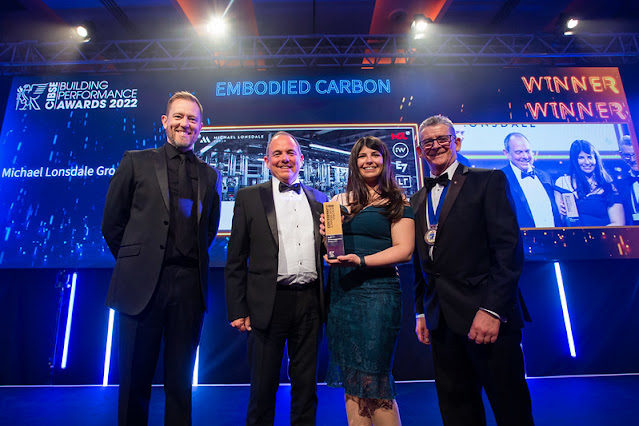Effective disinfection with CIBSE recognised UV-C technology
The winners of this year's CIBSE Building Performance Awards highlight the excellent work being carried out by CIBSE and its members in helping to create a low carbon future.
Winners of the Product or Innovation – Air Quality, Signify discuss their winning entry for the CIBSE blog below.
Restrictions may be behind us, but we continue to live in uncertain circumstances due to the pandemic. As organisations adjust to this new reality, good hygiene practices have become a prerequisite in our everyday routines - in the home, office, and public spaces. The increasing demand for solutions that promise efficiency in destroying harmful bacteria and viruses have, in turn, opened up opportunities for tried and tested forms of disinfectants. Enter UV technology.
There are three types of UV radiation found in sunlight. First, there are UV-A and UV-B, which you may recognise from sunscreen labels. On the other hand, UV-C has a powerful germicidal property and is now stepping in to provide an extra level of protection alongside vaccination roll-out. The efficacy of UV-C as a form of disinfection for air, surfaces, objects, and water is well known. The technology has proven to be highly effective against all pathogens tested to date, including SARS-CoV-2, the virus causing COVID-19 – causing a resurgence of interest in this relatively undersung technology.
How UV-C Technology Works
Viruses spread primarily through three vectors:
1. Direct airborne transmission between people – such as a cough or sneeze
2. Indirect airborne transmission through air flows – such as circulated air in a building
3. Indirect surface-borne transmission via contaminated surfaces – picking up an infected phone or piece of cutlery, for example
That's why, to protect buildings and premises such as schools, hospitals, hospitality venues, and even sports arenas, we must disinfect air, surfaces, and objects. UV-C radiation is part of the spectrum of light, and when bacteria, viruses and spores encounter it, the light breaks down their DNA, deactivating them. This stops viruses from replicating and renders them harmless. Recent research conducted with Innovative Bioanalysis shows that a UV-C disinfection upper air luminaires inactivated 99.99% of SARS-COV-2 in the air of a room within 10 minutes1 and the virus was below detectable levels at 20 minutes2.
UV-C in Practice
Due to its effectiveness, UV-C as technology finds an avenue for a multitude of applications, such as retail spaces, offices, schools, hospitals, transportation, food services, sports arenas, to name a few.
Very recently, the University of Leeds announced that a study has been launched into the effeciveness of using air disinfection to reduce the spread of COVID-19 in 30 primary schools in Bradford. As part of the pilot, ten out of the thirty schools are trialling Signify’s Ultraviolet (UV-C) technology. The UV-C devices installed are intended to provide an extra layer of protection for the schools' students, staff, and visitors, providing the highest quality air helping to reduce sickness and absenteeism.
In sports, PSV Eindhoven, RB Leipzig and Harlequins Rugby Club in the UK are some of the recent examples of sports stadiums that have installed UV-C technology for the safety of their players. Every year we hear about teams affected by flu bugs, affecting their performance & playing havoc with fixtures. While COVID-19 was the primary driver for clubs to install UV-C disinfection upper air luminaires in their dressing rooms, it can help protect players all year round from airborne diseases such as seasonal flu. In addition, UV-C installation in dressing rooms and tunnels help create a safer working environment for players and coaching staff.
Recognising Innovative Technologies
As countries put forward economic stimulus packages and embark on infrastructure projects, attention should be given to making workplaces, schools, and public buildings safer. Sadly, the spectre of COVID-19 is not going away anytime soon, and there is a need for innovative solutions like the UV-C air disinfection tools that can help add a layer of protection to any space.
In light of this, CIBSE recently recognised Philips Lighting UV-C Upper-Air Disinfection Luminaires as the most innovative product for air quality. The upper air UV-C disinfection luminaire is designed to work in the background, disinfecting the air during day-to-day business activities without interruption. It can be installed on a wall or a ceiling in many different locations. The luminaire emits a beam of UV-C light across the upper part of a room. Air flow, body heat & convection all work to push the air around the room, irradiating the air as it passes through the layer of UV-C.
While video calling has been a vital communication channel, there is no substitute for in-person meetings. Solutions such as UV-C air disinfection offers the confidence for workers to return to the office while feeling safe. It truly is a technology for the new normal.


.png)


Comments
Post a Comment